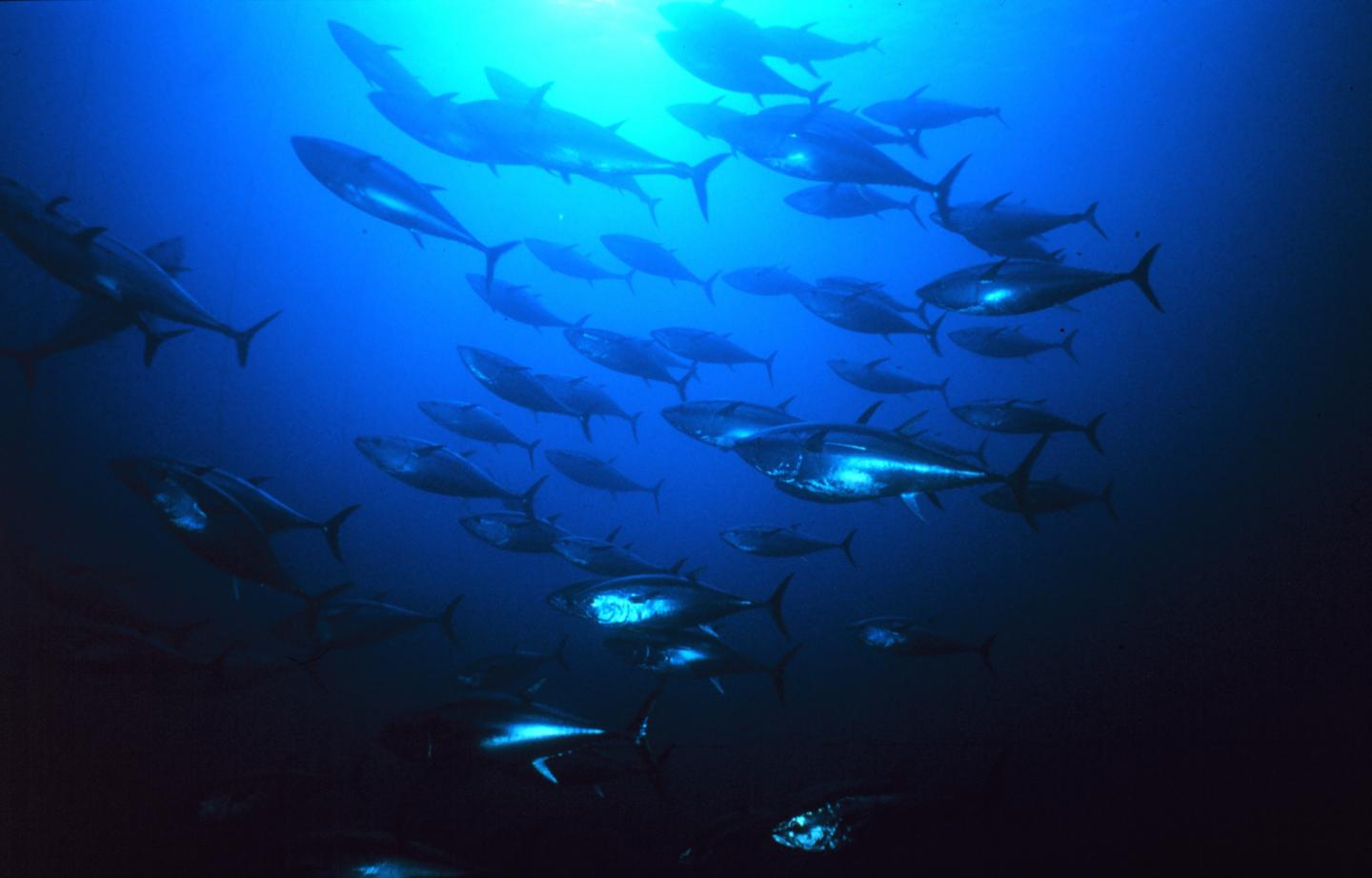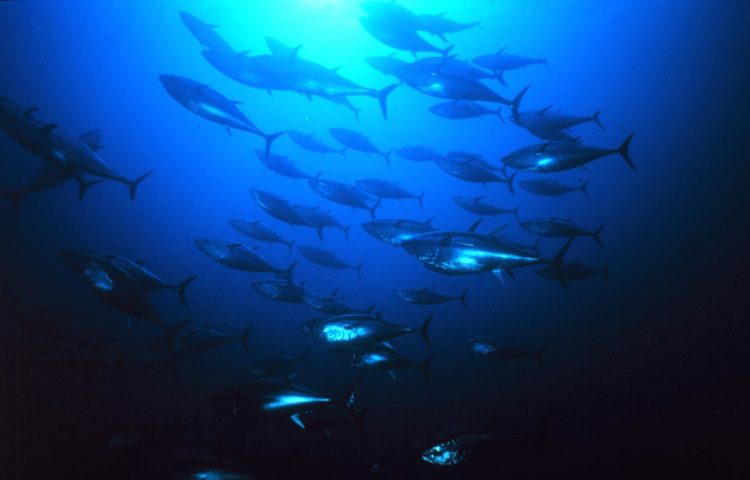
Credit: Danilo Cedrone, UN Food and Agriculture Organization
DURHAM, N.C. – The ratio of carbon isotopes in three common species of tuna has changed substantially since 2000, suggesting major shifts are taking place in phytoplankton populations that form the base of the ocean’s food web, a new international study finds.
“The change we observed in tuna, which are near the top of the marine food web, reflects profound changes in physiology or species composition occurring at the bottom of the food web,” said Nicolas Cassar, professor of biogeochemistry at Duke University’s Nicholas School of the Environment.
Specifically, the phytoplankton changes reflect more fossil fuel carbon capture by the oceans and possible stratification of ocean layers, which is driven by warming.
By analyzing nearly 4,500 samples of muscle tissue from three common species of tuna caught in the Atlantic, Pacific and Indian oceans between 2000 and 2015, Cassar and his colleagues discovered that the fishes’ carbon stable isotope composition values (the ratio of Carbon 13 to Carbon 12, called delta C-13) declined by between 0.08% and .25% during the study period.
To conduct their study, they analyzed carbon stable isotope ratios and nitrogen stable isotope ratios in yellowfin, bigeye and albacore tuna caught in tropical, subtropical and temperate waters. Carbon stable isotope ratios are widely used to track the flow of nutrients up marine food webs and identify a species’ primary food source. Nitrogen isotopes can be used to assess changes in a species’ place in the food web.
About a quarter of the decline in delta C-13 values is attributable to the increased availability of fossil fuel-derived carbon in marine ecosystems, which has more C-12, Cassar said. This was a change the researchers expected to see.
What’s driving the rest of the decline isn’t yet clear, he said, but one possibility is that it could be linked to increased ocean stratification.
Over the last 50 years, the oceans have absorbed 90% of the heat and 30% of the carbon emissions associated with global warming. This has promoted conditions in which water masses with different densities, temperatures or saltiness can stratify in layers beneath the surface rather than mix together, creating barriers that inhibit nutrients from rising up from deeper waters to provide fuel for phytoplankton near the surface.
While other contributing factors can’t yet be ruled out, analyses conducted as part of the new study support the hypothesis that as nutrients become more limited at the surface because of stratification, large, delta C-13-rich phytoplankton such as diatoms may be outflanked by smaller phytoplankton cells, which have a natural competitive advantage in lean times.
The potential long-term impacts of these changes on the marine carbon cycle are not yet fully understood, but the magnitude of the decline observed in tuna delta C-13 values over such a short time suggests “this is an issue that merits close scrutiny and additional study,” Cassar said. “Because tuna travel long distances, they integrate changes in the food web structure over very large spatial scales.”
He and his colleagues published their peer-reviewed findings Nov. 11 in the journal Global Change Biology.
“Detecting biological changes in the ocean that are caused by climate change is very challenging, but this study provides new guidance by revealing that changes in the biological component of the marine carbon cycle can be traced in the tissues of marine top predators,” Cassar said
###
Scientists from institutions in France, the United States, Germany, Australia, New Zealand, Spain, the Seychelles and the French territory of New Caledonia contributed to the research. Anne Lorrain, a marine ecologist at the French Institute of Research for Development’s Marine Environmental Sciences Laboratory, was lead author.
The paper was supported by grants from Laboratoire d’Excellence LabexMER (#ANR-10-LABX-19) and from the French government through the program Investissements d’Avenir.
CITATION: “Trends in Tuna Carbon Isotopes Suggest Global Changes in Pelagic Phytoplankton Communities,” A. Lorrain, H. Pethybridge, N. Cassar, A. Receveur, V. Allain, N. Bodin, L. Bopp, C.A. Choy, L. Duffy, B. Fry, N. Goñi, B.S. Graham, A.J. Hobday, J.M. Logan, F. Ménard, C. Menkes, D.E. Olson, R.J. Pagendam, D. Point, A.T. Revill, C.J. Somes and J.W. Young. Global Change Biology, Nov. 11, 2019. DOI: 10.1111/gcb.14858
Media Contact
Tim Lucas
[email protected]
919-613-8084
Original Source
https:/
Related Journal Article
http://dx.





